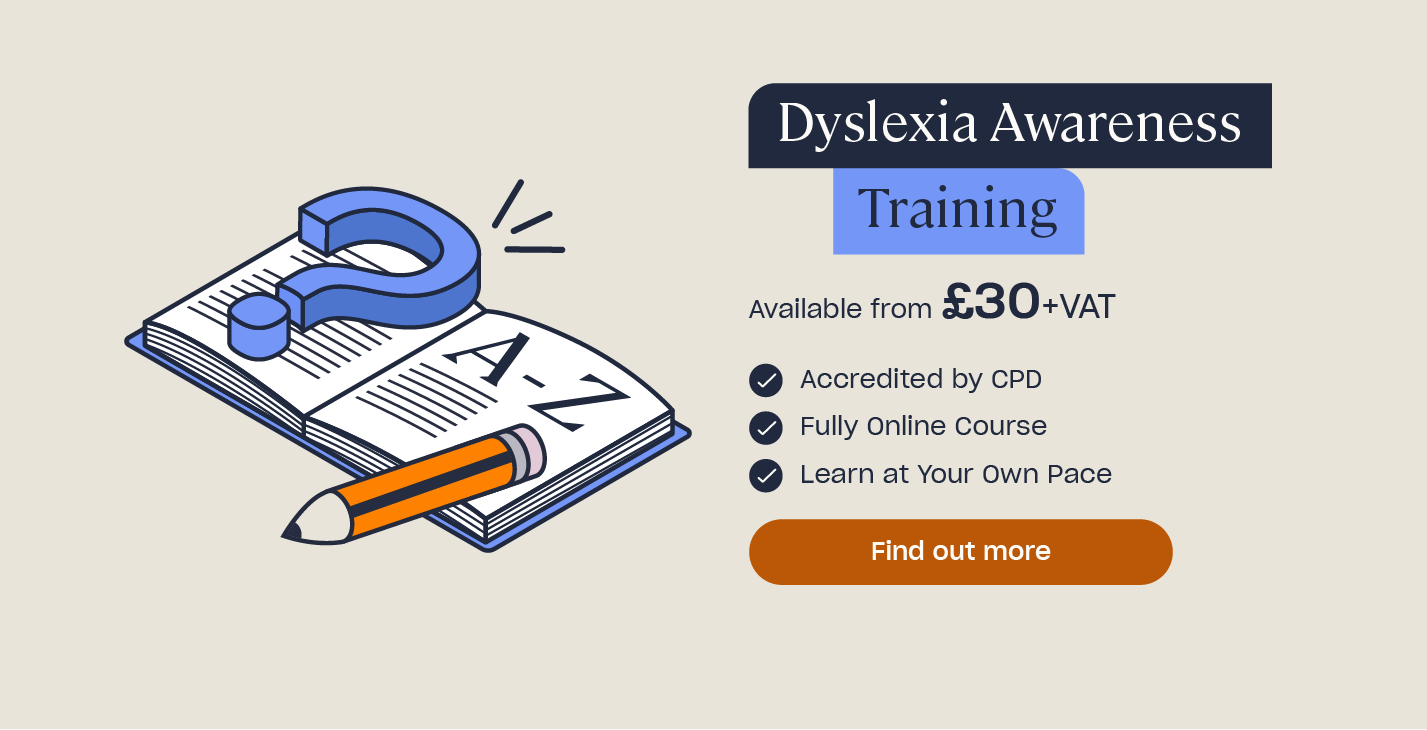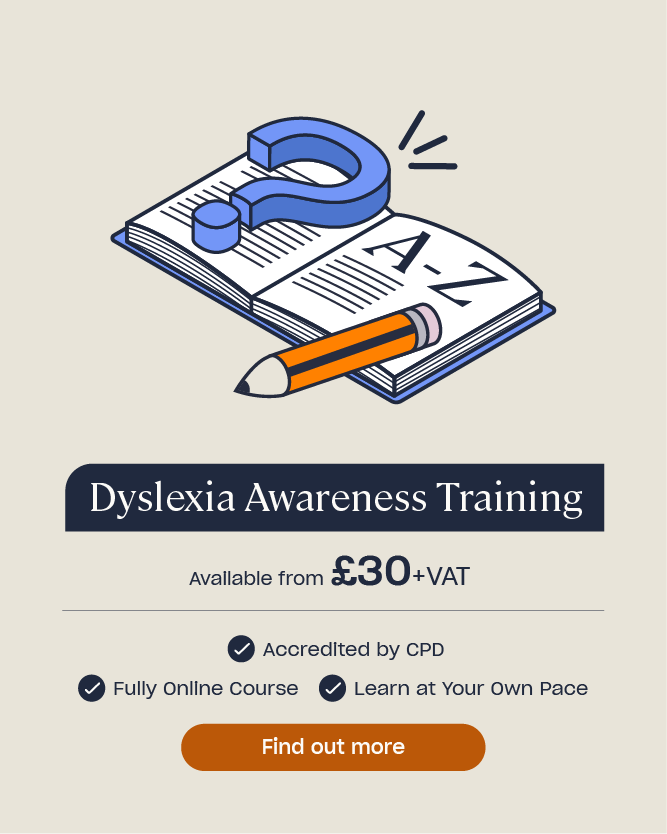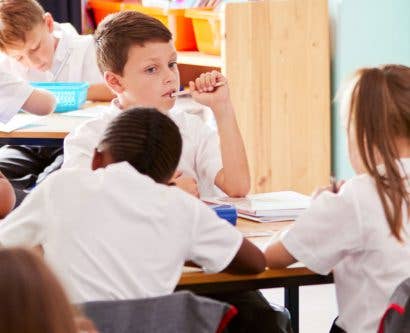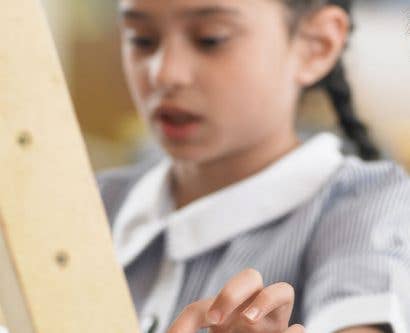How to Help a Child with Dyslexia in the Classroom
Dyslexia is a lifelong learning difficulty affecting the way that the brain processes information. It primarily affects children’s ability to learn, and can impact their reading, writing, spelling, speech, auditory and phonological processing, and mathematics. Dyslexia exists on a continuum, and therefore, people experience it in different ways – each will have their own unique set of strengths and challenges.
The exact cause of dyslexia is unknown, but it often runs in families and is believed to have a genetic link. It is likely that the parents of children with dyslexia may also experience similar strengths and challenges to their children. Dyslexia is not linked to a lack of intelligence, poor parenting, or the child’s socio-economic background.
A report by Made From Dyslexia estimates that as many as one in five people are dyslexic, and 80% of children with dyslexia leave school unsupported and undiagnosed. As a result, increased awareness amongst professionals working within the education sector is crucial. Early recognition and support can be instrumental in improving outcomes for children and young people with dyslexia.
In this article, we will outline the signs of dyslexia in different age ranges, explain how it affects learning, and provide you with a range of strategies that you can use to support children with dyslexia in the classroom.

What are the Signs of Dyslexia?
Spotting dyslexia in children can be difficult. There are no physical signs and some children are good at covering up their struggles. Dyslexia is often only identified when it is already affecting a child’s progress and achievement.
The signs of dyslexia often become more obvious when children begin to learn to read and write. However, challenges may only become apparent when the child is exposed to a new environment or a significant change in their life.
Although every child will experience dyslexia differently, there are some common signs associated with specific age ranges which you can look out for. These include:
Signs of dyslexia in primary-aged children:
- Slow processing speed, including slow spoken or written language.
- Poor and/or inconsistent spelling.
- Poor handwriting.
- Mixing letters and numbers.
- Forgetfulness.
- Struggling to follow instructions or directions.
- Difficulties with concentration.
- Being easily distracted.
Signs of dyslexia in teenagers:
Any of the signs above, plus:
- A disparity between the way they communicate verbally and what they can write on paper.
- Unwillingness to read aloud.
- Poor comprehension skills.
- Struggling to stay organised and meet homework deadlines.
- Difficulties copying and taking notes.
- Social withdrawal.
- Behaviour difficulties.
- Fatigue.
- A possible dislike for reading and writing, and/or schooling in general.
You can find out more about the signs of dyslexia in children and young people here.

How Does Dyslexia Affect Learning?
When considering how dyslexia affects learning, we need to understand its main characteristics: difficulties with phonological awareness, verbal memory, and verbal processing speed. By understanding the needs which arise as a result of these difficulties, teachers can determine how best to deliver and structure information to their students.
- Phonological awareness is working out and manipulating the sounds within spoken language. It involves picking out rhyming words, alliteration, and counting syllables in a word. Phonemic awareness is a subset of phonological awareness and involves identifying and manipulating the individual sounds in words. Difficulties in this area can affect reading, writing, and spelling. You can find out more about phonemic awareness here.
- Verbal memory is the ability to retain an ordered sequence of verbal material for a short period of time – an important skill in many aspects of learning. Children with dyslexia may only be able to ‘hold on to’ new information for two or three seconds.
- Verbal Processing Speed is the time taken to process verbal information. It involves the ability to take in information, process it, respond to it, and recall it. A slower verbal processing speed can affect a child’s ability to recall long lists, follow instructions, sequence words, and structure their work.
Dyslexia can also affect children’s organisational skills and concentration. They may appear forgetful and dreamy. Children with dyslexia can also become very easily overwhelmed with the amount of information they are being asked to process throughout the day, which can result in fatigue and/or behaviour that challenges.
Children with dyslexia, if unsupported, can be left feeling upset, frustrated, and alienated – which can negatively impact their mental health. It is estimated that as many as 40-60% of young people with dyslexia have some kind of psychological difficulties.

What Is The Dyslexia Screening Bill?
We need teacher training to cover the modern, evidence-based techniques for teaching dyslexic children, and those with other neurodiversities; all teachers are teachers of dyslexic children, yet there is inadequate teacher training for all neurodiversity.
Matt Hancock, the Conservative MP for West Suffolk
The Dyslexia Screening Bill was introduced by Matt Hancock, the Conservative MP for West Suffolk, in December 2021. However, the Bill was later withdrawn by Mr Hancock in March 2022, without progressing beyond instruction.
The Bill proposed universal dyslexia screening for children in primary schools. It also highlighted the importance of teacher training in improving outcomes for children with dyslexia. As dyslexic brains work differently to a more neurotypical profile, Hancock argued that all teachers should know how to teach ‘according to how their brains work’.
Despite the Bill being withdrawn, the Department for Education remain committed to ensuring that all children and young people with Special Educational Needs and Disabilities (SEND), such as dyslexia, receive the support they need to achieve in their education. Through the Children and Families Act 2014, mainstream schools must do their best to make sure a child or young person with SEN receives the support they need.
A spokesperson from the Department for Education stated: ‘The SEND Code of Practice is clear that meeting the needs of a child with dyslexia does not require a diagnostic label or test. Instead, we expect teachers to monitor the progress of all pupils and put support in place where needed.’
As part of their commitment to improving outcomes for pupils with SEND, the department published the SEND and Alternative Provision Green Paper in March 2022. This set out their plans to better identify children at risk of falling behind and provide them with the support they need, including those with neurodivergent conditions. They welcome feedback during the consultation period, which ends on the 22nd July, 2022. You can find out more here.
Hancock’s campaigning for universal dyslexia screening in primary schools and better teaching training for all neurodivergent conditions continues. In June 2022, he delivered the first reading of the updated Dyslexia Screening and Teacher Training Bill in parliament.

Classroom Strategies for Dyslexia
The majority of children with special educational needs, such as dyslexia, will have their needs met through high-quality teaching and adaptations to it. Schools should follow the Graduated Approach when considering how best to meet the needs of children with dyslexia. This might include adjustments to their Universal Provision and/or Targeted and Specialist Provision, depending on the individual’s level of need.
Dyslexia Awareness Training
If you work with children and young people, then you may be interested in taking our Dyslexia Awareness course. Supported by the Helen Arkell Dyslexia Charity, the course provides a comprehensive overview of dyslexia, its characteristics and impact, and the diagnostic assessment process. It also introduces learners to a range of strategies that they can use in the classroom to ensure children with dyslexia thrive. Find out more here.
Strategies to support children with dyslexia in the classroom include:
Increase awareness of learning differences and neurodiversity across the setting. The more the community knows, the more understanding and supportive they will be. Hold assemblies, welcome guest speakers, boost staff knowledge regularly, and host webinars for parents – you can even invite a student with dyslexia to speak to their classmates about their unique strengths and challenges, if they wish to. Ask children and adults alike to celebrate the wonders of dyslexia.
Focus on the positives. Highlight what the children are good at and acknowledge their strengths. If a child constantly receives negative feedback, their self-confidence will be affected. This can affect their general wellbeing, social development, and mental health, as well as their progress and achievement across the curriculum.
Make transitions seamless. Whether it be a new classroom, school, or setting, provide students with the opportunity to meet new teachers and experience new environments – virtually or in-person. Introduce new routines in advance of start dates and provide visual copies of important instructions or reminders. You can find out more about how to support children through transitions here.

Chunk tasks to support working memory. If we overload students with too many tasks and instructions, they can easily become overwhelmed. For children with dyslexia, who experience difficulties with verbal processing speed and memory, teachers need to be particularly mindful of how they structure lessons to support working memory. Provide clear instructions, model tasks, and check understanding regularly. Repeat instructions and ask your learners to repeat them back to you or their partners. You can also improve and develop metacognitive talk by asking students to verbalise their thought processes.
Provide visual aids. Provide children with glossaries, timelines, key words, multiplication squares, and spelling banks to boost memory and retention. Using mnemonics, rhymes, and songs can also be useful practice.
Provide lesson summaries. Students with dyslexia often benefit from receiving lesson overviews and resources in advance. These could be handouts or links to videos or websites. Audio lesson and unit summaries, recaps, and introductions, alongside early access to lesson handouts and resources, can help children prepare for their learning in advance, and/or consolidate previous learning.
Communicate well with parents. Speak to parents to gain a more holistic understanding of the child’s struggles. Discuss supportive strategies that can be replicated across both environments. You can find out more about how to promote effective communication with parents here.
By training teachers and classroom assistants in dyslexia awareness and how to support pupils with dyslexia, we can make sure that many thousands of children with dyslexia get better help. The key is to receive the right support at the right time, helping people to be the best they can be, and to improve the quality of their lives.
The Helen Arkell Dyslexia Charity
When left unidentified and unsupported, dyslexia can affect children’s social, emotional, and academic outcomes. It is vital that those working with children and young people know the signs of dyslexia, its characteristics, and how these affect teaching and learning. Greater awareness of dyslexia and improved training opportunities will be vital if we are to ensure that all children with dyslexia are identified and supported in the classroom.
Further Resources:
- Dyslexia Awareness Training
- What are Specific Learning Difficulties (SpLDs)
- How to Support Children With Speech, Language, and Communication Needs
- 8 Useful Apps to Help with Dyslexia
- How to Help a Child with Dyspraxia in the Classroom











